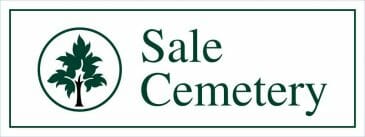 There are no records to indicate when the cemetery was first used, although some records suggest it was as early as 1852. The earliest marked grave is that of William Wood, who died in 1855. The cemetery was first gazetted in 1857 when an area of 11 acres, 3 roods and 35 perches was set apart for use as a cemetery by order of the Governor in Council. An additional area was gazetted in 1866. The first meetings were held at the courthouse. Records were maintained from 1861 however they are very sketchy until approximately 1874.
There are no records to indicate when the cemetery was first used, although some records suggest it was as early as 1852. The earliest marked grave is that of William Wood, who died in 1855. The cemetery was first gazetted in 1857 when an area of 11 acres, 3 roods and 35 perches was set apart for use as a cemetery by order of the Governor in Council. An additional area was gazetted in 1866. The first meetings were held at the courthouse. Records were maintained from 1861 however they are very sketchy until approximately 1874.
The clover leaf design of the cemetery began some time after the first burials occurred. The design displays three central areas denoting each major denomination at the time – Presbyterian, Catholic and Church of England. Each area comes to a point near the main gates of the cemetery. It is the only cemetery of this design in Gippsland.
The first sexton’s house was built in 1870 at a cost of £265 and was occupied by Mr. Robert Gibbs in August 1870.
Many notable pioneers of Gippsland are buried in the Sale Cemetery, perhaps the most well known being Angus McMillan, an explorer who passed through Gippsland in 1840; Archibald MacLeod; William Tennant Dawson, a District Surveyor from 1850; Henry Crofton Stavely, a Police Magistrate; Andrew Gerrand, who ran the punt over the Latrobe River to Longford; Edward Crooke, an early squatter; and Patrick Coady Buckley, an early beef producer. Many streets around Sale bear the names of many more early businessmen who are buried here.
In 1971 a Bronze Lawn area was brought into use, with a Monumental Lawn and a Niche Wall for the interment of ashes as well as shrubs and roses. Burials still occur in the General Cemetery .
The current office was built in 1992 and includes a fireproof strongroom to house the records. The registers maintained at the cemetery are numerous and include registers kept in alphabetical order, grave locations, and chronological order as well as a library card system and a basic computer database. Other paperwork as required by the Department of Human Services is also maintained.
Two Memorial Gardens for the interment of ashes have been constructed, the first in 1997 and the second in 2004. These are the two circular gardens in the centre of the lawn area.
A Commonwealth War Cemetery lies within the grounds of the Cemetery and includes 58 servicemen and women who died during World War 2.
There are more than 15,000 persons buried at the Sale Cemetery (as at October 2021).
